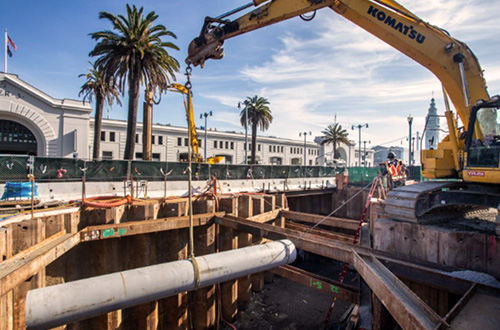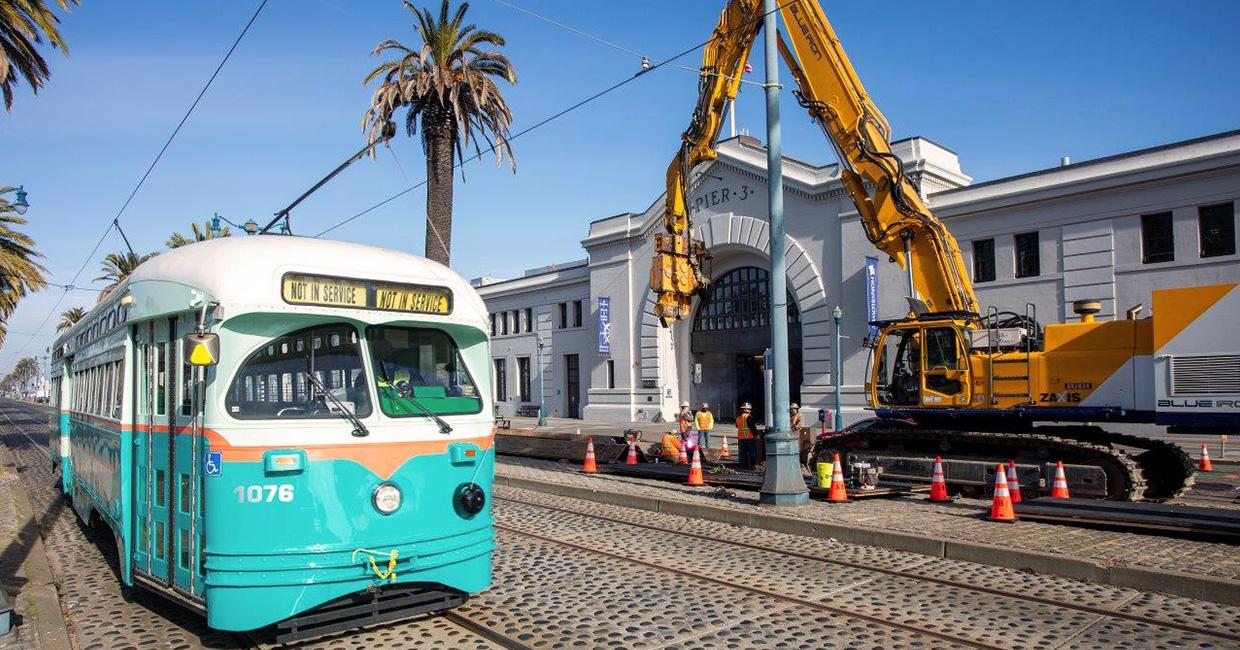We’ve seen a historic drought followed by record-breaking storms. Climate change is already affecting our systems, region and ratepayers as weather becomes more extreme — but the San Francisco Public Utilities Commission and our more than 2,200 employees are fighting back.
We’ve mobilized our resources to create a $3.2 billion two-year capital budget and an $11.8 billion 10-year infrastructure plan that invests smartly in climate resiliency, broadens our commitment to a healthy San Francisco Bay and expands clean-energy options. It does that while creating more than 50,000 jobs over the next decade, mostly in the private sector.
At the same time, we are addressing climate change and the lingering economic effects of the pandemic. In doing so, we’re investing in critical infrastructure so that you will still have clean drinking water and flushing toilets after the next major earthquake.
What’s at stake? Our city as we know it.

Here’s just one example: The southern part of Ocean Beach is under siege from tides and increasing storms, threatening critical wastewater infrastructure and limiting public shoreline access and recreational opportunities.
To protect against these threats, the SFPUC will begin construction on San Francisco’s first major climate-change adaptation project in 2025, creating new public open space at Ocean Beach, protecting key public assets and ensuring coastal access in the face of climate change.
Other crucial climate-resilience investments include green stormwater infrastructure such as rain gardens and permeable pavement, which divert millions of gallons of stormwater annually, and the Folsom Area Stormwater Improvements Project, which reduces the risk of flooding in a historically vulnerable neighborhood.
The SFPUC is also a leading environmental steward of a healthy San Francisco Bay. We’re proposing to invest $1.5 billion to reduce wastewater nutrients in the bay, which contribute to algal blooms. This is the largest investment in nutrient reduction in the region to date. In doing so, we’re creating a model that other local water agencies can replicate to protect San Francisco Bay now and in the future.
Through CleanPowerSF, the SFPUC offers renewable, affordable, and accessible energy to 385,000 San Francisco customers. At the same time, our Hetch Hetchy Power delivers 100% greenhouse-gas-free electricity to more than 6,000 residential, commercial and municipal customers, including San Francisco’s airport, the Muni transit system and many affordable-housing sites. Our two power services saved customers more than $170 million on electric bills in 2023 compared with PG&E.

The SFPUC’s clean-energy expansion includes $97 million for electricity transmission infrastructure to support ferries transitioning to zero emissions and future electrical needs at the Port of San Francisco. It also includes a $331 million rebuild of a critical section of our water conveyance system to our Sierra Nevada-based hydropower facility, which has been generating clean power since 1925.
We’re also increasing the replacement of aging water and sewer mains in San Francisco. Parts of our water system are about 100 years old, and the oldest parts of our sewer system date back to the Gold Rush.
We know these investments add up to a lot of money. We also know that shortchanging utilities and failing to invest in our water, power and sewer infrastructure might lead to the very crises that have occurred in the United States in the last few years.
Think Flint, Mich., Jackson, Miss., and Houston, where residents had no access to clean drinking water during crises. In a state like California that faces droughts, we can’t — and we won’t — let that happen here. Kicking the can down the road is not an option.
By prioritizing sustainability and climate action, we’re protecting the environment and paving the way for a clean and healthy future for generations to come.
At the same time, we are mindful that capital projects can drive up utility rates. We are a not-for-profit public utility. Our rates cover the true cost of operating, maintaining, and upgrading our systems — nothing more. Yes, our rates are going up to pay for these investments, but we are doing it in a way that is thoughtful, responsible, and fair.
That’s why in November 2023, the SFPUC adopted an Affordability Policy to ensure sustainable budget planning and rate setting. The policy established clear ways to assess the effect of budget increases on future rates and guidelines for keeping rates affordable, with special consideration for equity and low-income customers.

We’re also advancing ratepayer affordability in other ways, including our Customer Assistance Program, which offers discounts of 25% to 40% to low-income customers. Program participation has grown 209 percent over three years, from 2,100 to 6,500 customers, thanks to our large-scale multilingual outreach in low-income, Black, immigrant and environmental-justice communities.
There will be other very tangible benefits to making these investments in our collective future. Our proposed $3.2 billion two-year capital budget and 10-year Capital Improvement Plan will catalyze sustained economic growth and more than 50,000 jobs over the next 10 years. Many of these jobs will be good-paying union jobs that benefit communities and provide a path to the middle class. Our plan prioritizes union labor, ensuring workers receive fair compensation, safe working conditions and a secure future. These jobs and their associated spending will support countless local businesses and the local economy throughout the 10-year plan.
With our robust two-year budget and strategic 10-year capital plan, the SFPUC is meeting the moment. To do that, our rates are increasing, but these are needed investments in San Francisco’s economy, infrastructure and environment.
This story was originally published in the SF Examiner Forum on April 11, 2024.


